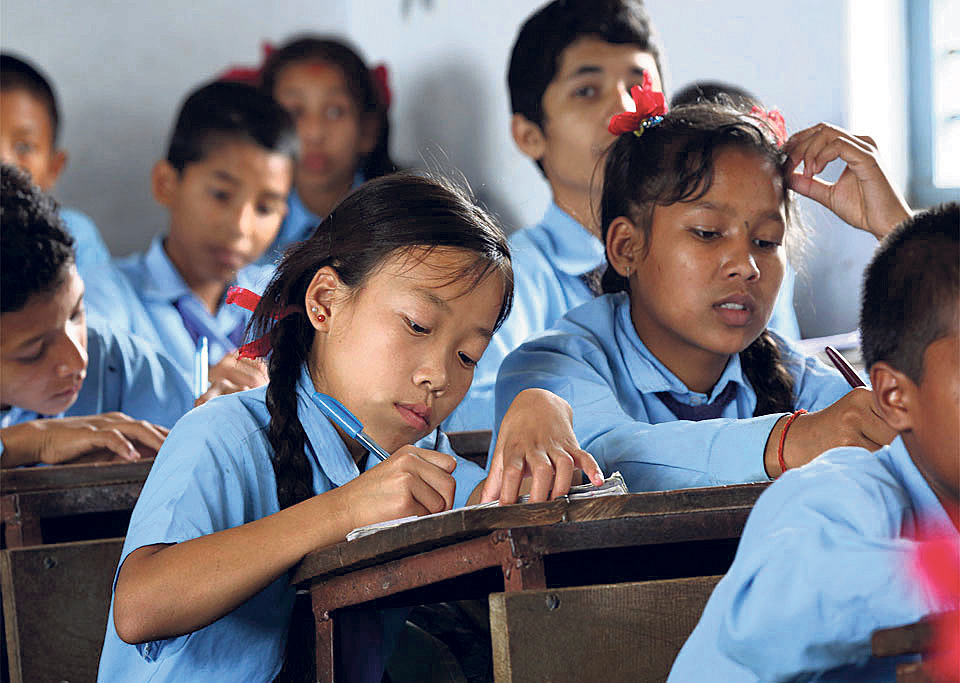
OR
Opinion

Each individual should have an equal opportunity for educational progress. Education is a key issue. On top of that, inclusive education is a prerequisite for the accomplishment of all other rights.
Inclusive higher education is about how we develop and design our universities, programs and activities so that all persons can learn and participate together. Inclusive higher education system provides a better-quality education for all people, including refugees with disabilities and is instrumental in creating more inclusive and open societies. Higher education institutions provide the context for a refugee’s first relationship with the world outside their families, enabling the development of social relationships and interactions.
But in Nepal, realization of the right to education still is a pipedream for refugees with disabilities, especially Rohingya refugee women with disabilities as they face multiple challenges. These problems are associated with disability-related discrimination. What is worrying is some of the challenges they have to face only because of the fact that they are refugees.
Nepal’s government has yet to campaign or provide policy information on disabled refugee people; including their human rights, improving the education system, and regulation of welfare.
Problems remain
As an Institute of International Education (IIE), Centennial fellow, in between January and March 2023, collaborating with legal researchers, I conducted research titled “Overcoming the Barriers That Refugee and Internally Displaced People with Disabilities Face in Accessing Higher Education in Nepal.” This research aims to address the challenges that refugees with disabilities, especially refugee women with intellectual disabilities face to ensure their right to higher education. This research’s main findings: The practical barriers to inclusive education are mainly associated with limited financial resources, poor understanding of disability, and low prioritization of inclusive higher education. These barriers include a lack of information about the extension of the right to education to include refugees with disabilities and inadequate knowledge about existing possibilities and options available; inaccessible university facilities with poor reasonable accommodation; the existence of segregated and inferior quality of education; ineffective social support; high university fees; and stigma against refugees with disabilities and their families.
During policy-level interactions and workshops, the participants, including refugees with disabilities, argued that identifying persons with disabilities is another systematic barrier in addressing the needs of applicants with disabilities, as asylum-seekers with disabilities remain under-reported. For example, a blind or visually impaired person faces procedural barriers when completing written forms and receiving written communications, which would exacerbate their challenges in participating in the refugee status determination process. To accommodate this, it would be recommended to identify communication preferences, in consultation with the applicant, and provide the individual with information in accordance with these preferences, for example, via braille or screen reader.
For an asylum-seeker with intellectual disability and difficulties understanding questions and instructions, adaptations may include accessing information in easy-to-read and digestible formats. During the interviews and hearings, the case officer may also have to extend the time with regular breaks or do multiple/shorter interviews; this could also benefit applicants with psychosocial disabilities. For individuals who are deaf or hard of hearing, adjustments may include the provision of quality and qualified sign language interpreters from the initial interviews, if that is their preference. It should be noted that if deaf asylum-seekers communicate in their national sign language, the allocated sign language interpreter must be able to communicate in the corresponding national sign language.
CRPD and the Refugee Convention call
International human rights instruments such as the 2006 Convention on the Rights of Persons with Disabilities (CRPD) and the 1951 Refugee Convention affirm that all persons, including refugees with disabilities should be entitled to enjoy the right of equal recognition before the law. Recognition of equality before the law is a principle of international law and the implementation of this principle is indispensable in the exercise and enjoyment of all human rights such as the right to education.
The way forward
Refugees with disabilities are placed between two fundamental legal instruments the 1951 Refugee Convention and the 2006 CRPD that seek to protect this group. They are entitled to claim international protection and be protected as refugees. The CRPD has provisions that can be applied to asylum procedures, from the identification process to integration and resettlement procedures to ensure equal access.
The main barrier that prevents refugees with disabilities from accessing higher education in Nepal is the attitudinal and knowledge barriers, exploring the lack of understanding among decision-makers deciding upon claims of disability. As a state party to international human rights instruments, to address communication and information barriers, Nepal is obliged to provide information in either easy-to-read format, braille, sign language interpretation or other forms of communication to refugees with disabilities.
You May Like This

Education minister brings roadmap for education sector
KATHMANDU, April 11: Minister for Education, Science and Technology (MoEST) Giriraj Mani Pokharel on Wednesday unveiled a seven-page roadmap for... Read More...

State-Minister for Education Adhikari bats for education reform
CHITWAN, Sept 27: State-Minister for Education, Sheshnath Adhikari, has given a clarion call to the concerned authorities to bring about... Read More...

Rights of every student to quality education secured: Education Minister Shrestha
KATHMANDU, June 14: Deputy Prime Minister and Education Minister, Gopalman Shrestha has said that the right of every student of... Read More...







Just In
- NRB to provide collateral-free loans to foreign employment seekers
- NEB to publish Grade 12 results next week
- Body handover begins; Relatives remain dissatisfied with insurance, compensation amount
- NC defers its plan to join Koshi govt
- NRB to review microfinance loan interest rate
- 134 dead in floods and landslides since onset of monsoon this year
- Mahakali Irrigation Project sees only 22 percent physical progress in 18 years
- Singapore now holds world's most powerful passport; Nepal stays at 98th












Leave A Comment